Yoga for Stress Relief and Relaxation
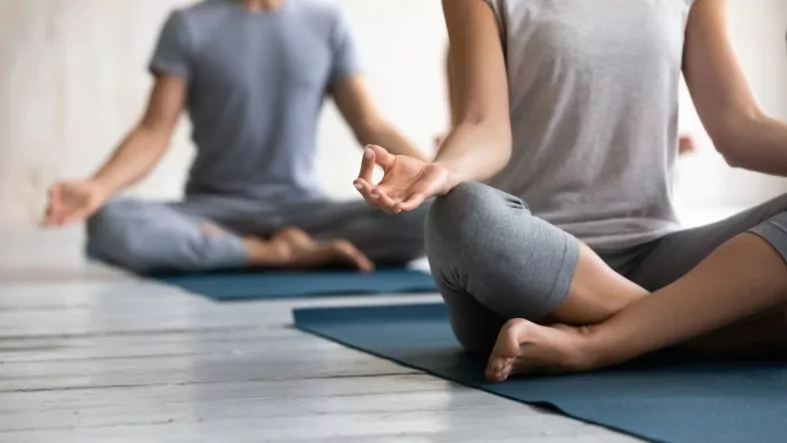
In today’s fast-paced world, the need for complementary medicine, particularly in the form of stress relief practices, has never been more evident. Among the various alternative medicine options available, yoga emerges as a frontrunner in combating stress, anxiety, and depression. Its holistic approach, combining physical postures, controlled breathing, and meditation techniques, offers individuals a powerful means to achieve inner peace and emotional resilience. Practicing yoga for stress relief not only reduces the physical symptoms of stress but also fosters mindfulness, decreases cortisol levels, and builds a supportive community, making it a valuable resource for those seeking to navigate the challenges of modern life with greater serenity and well-being.[1]
- Yoga for Stress Relief: Beyond Physical Benefits
- 9 Easy Yoga Poses for Depression and Anxiety
- Easy Pose (Sukhasana)
- Downward Facing Dog Pose (Adho Mukha Svanasana)
- Upward-Facing Dog Pose (Ūrdhva Mukha Svānāsana)
- Bridge Pose (Setu Bandha Sarvangasana)
- Child's Pose (Balasana)
- Cat Pose (Marjaryasana) to Cow Pose (Bitilasana)
- Seated Forward Bend
- Half Moon Pose, Standing Forward Bend, Upward Salute, and more
- Corpse Pose (Savasana)
- Breathing Techniques: The Heart of Yoga
- Evidence Backing Yoga for Mental Health
- Enhancing Yoga Practice for Maximum Benefits
- Wrapping Up: Practicing Yoga for Holistic Well-being
1 Yoga for Stress Relief: Beyond Physical Benefits
Yoga isn’t just about flexibility and balance; it offers profound mental health benefits. Regular yoga practice helps to calm the nervous system, particularly the sympathetic nervous system, which is responsible for our fight-or-flight response. By activating the parasympathetic nervous system, yoga encourages relaxation, reduces blood pressure, and improves sleep quality.
2 9 Easy Yoga Poses for Depression and Anxiety
The beauty of yoga lies in its simplicity. Anyone, regardless of age or experience, can start with basic poses to relieve stress. Below is a curated yoga sequence for stress relief, which you can practice on your yoga mat at home or at a yoga studio.
Easy Pose (Sukhasana)
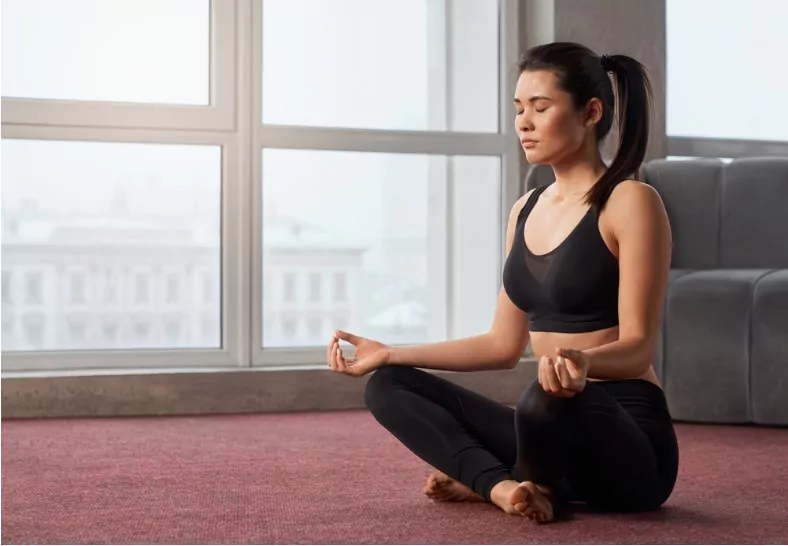
Begin your yoga practice seated on your mat with your legs crossed, spine straight, and hands resting on your knees. Close your eyes, breathe deeply, and let go of negative emotions.
Downward Facing Dog Pose (Adho Mukha Svanasana)
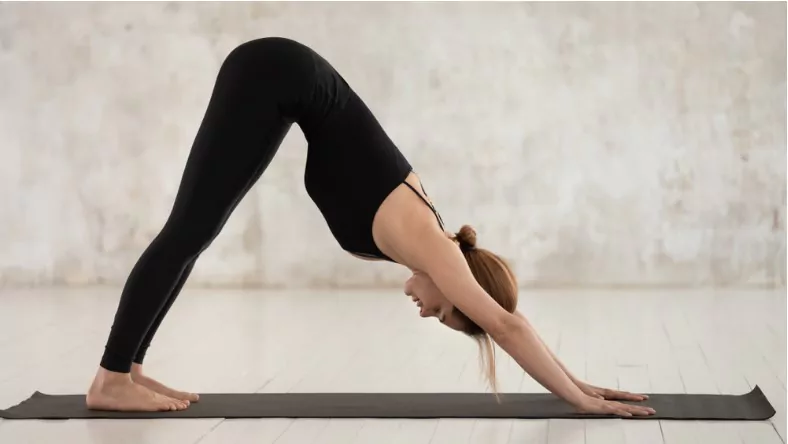
Transitioning from the easy pose, get into a table-top position. Exhale, push your hands forward, lift your hips, and form a straight line from your hands to your tailbone. Gaze downward, releasing tension.
Upward-Facing Dog Pose (Ūrdhva Mukha Svānāsana)
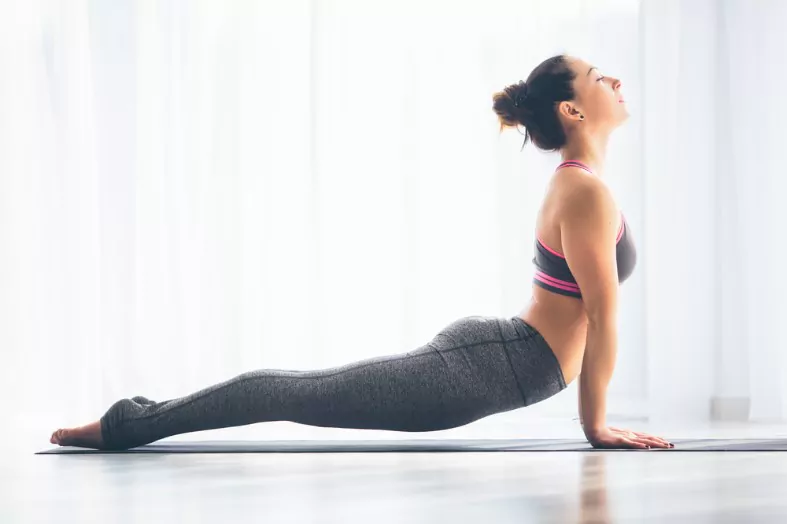
Lie flat on your mat, palms facing down. Press through your palms, straightening your arms and lifting your torso. Engage your legs but let your knees remain off the floor. This pose stimulates the respiratory system, allowing you to breathe deeply.
Bridge Pose (Setu Bandha Sarvangasana)
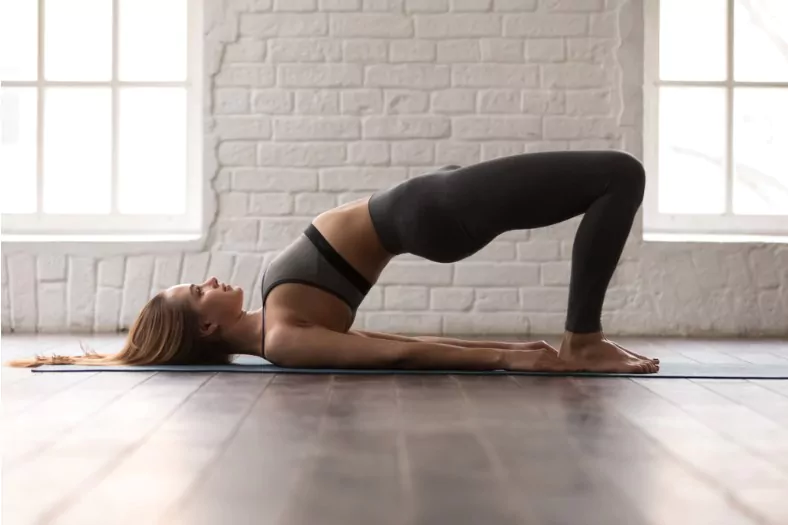
Lie on your back with your knees bent and feet flat on the ground. Lift your hips, keeping your arms by your sides. This yoga pose helps to reduce stress by stretching the front body and spine.
Child's Pose (Balasana)
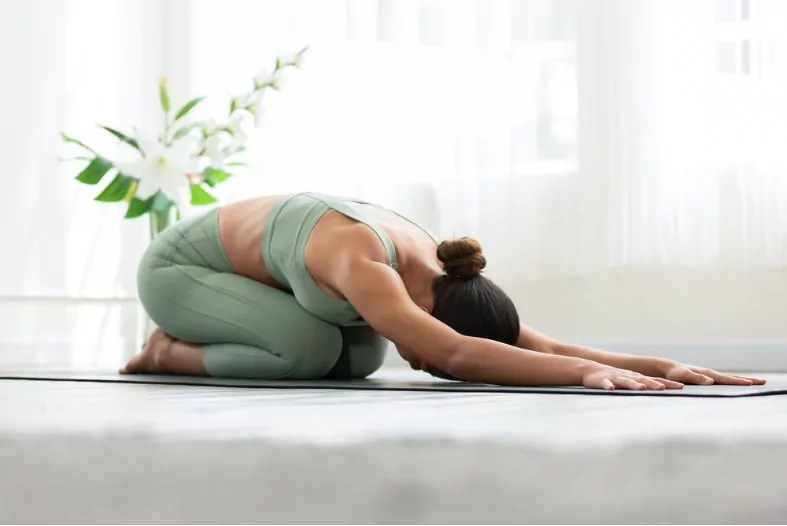
From a kneeling position, bend forward, stretch your arms overhead, and rest your forehead on the mat. This pose is an absolute favourite for stress relief. It calms the nervous system and provides comfort.
Cat Pose (Marjaryasana) to Cow Pose (Bitilasana)
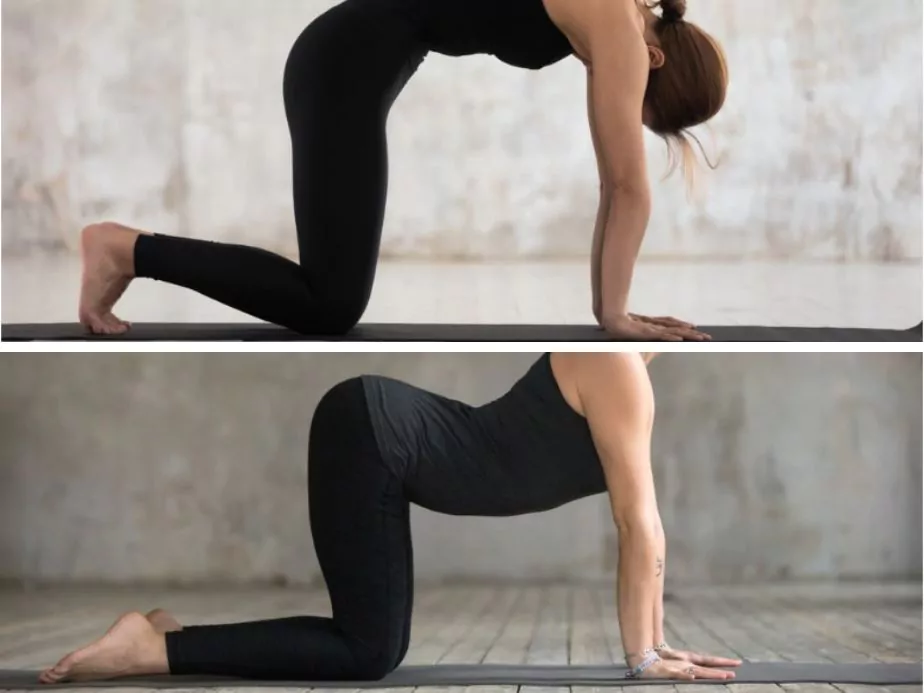
Begin in a neutral tabletop position. As you inhale, arch your spine and look up (Cow Pose). As you exhale, round your spine and gaze at your navel (Cat Pose). This cat-cow pose sequence is therapeutic for the spine and a great way to manage anxiety.
Seated Forward Bend
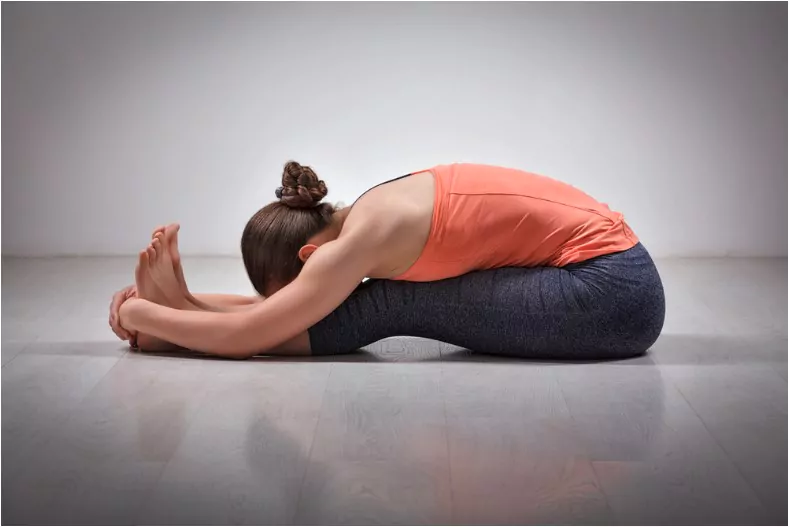
Sit with your legs stretched out. Inhale, raising your arms overhead, and as you exhale, fold forward. The seated forward bend is therapeutic, relieving anxiety and calming the brain.
Half Moon Pose, Standing Forward Bend, Upward Salute, and more
These poses, when added to your daily routine, can further enhance the health benefits of your yoga practice, helping to relieve stress and tension.
Corpse Pose (Savasana)
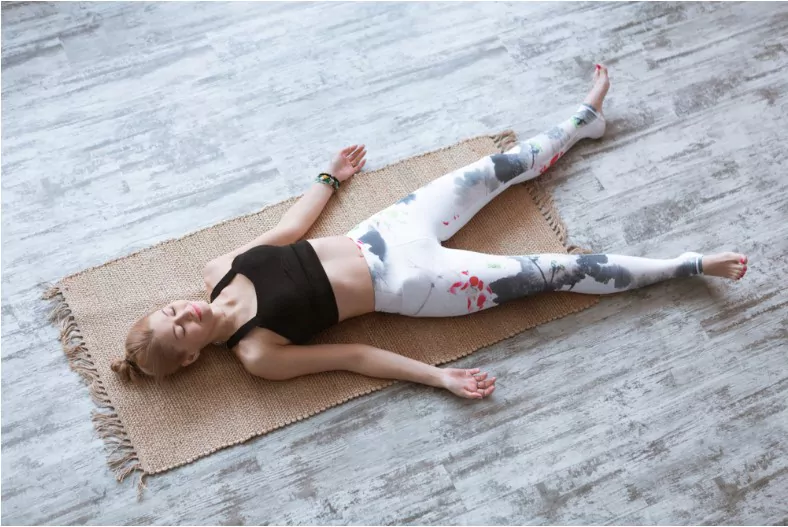
This pose is the epitome of relaxation techniques in hatha yoga. Lie flat with your arms and legs relaxed, palms facing upwards. Breathe deeply and release stress, letting go of any remaining tension.
3 Breathing Techniques: The Heart of Yoga
Breathing exercises are the cornerstone of hatha yoga, a popular form of yoga that emphasizes physical postures and breath control. Some effective breathing techniques include:
Deep Breaths: Simply taking deep breaths can activate the parasympathetic nervous system, promoting relaxation.
Easy Pose Breathing: Sit with your legs crossed and spine straight. Gaze downward and breathe deeply, focusing on your breath.
By incorporating these breathing techniques, you can manage anxiety better, ensuring that your body feels more in sync with your mind.
4 Evidence Backing Yoga for Mental Health
Randomized controlled trials and systematic reviews have consistently shown yoga’s efficacy in improving mental health. By integrating yoga into your daily routine, you can better manage stress, anxiety, and depression.
5 Enhancing Yoga Practice for Maximum Benefits
To reap the full benefits of yoga for stress relief, consider the following:
Consistency: Incorporating yoga into your daily routine, whether in a yoga studio or at home, can provide sustained relief from stress and anxiety.
Diverse Sequences: Customize your yoga sequence by blending various poses. This ensures that you address different stress points in your body.
Yoga Classes: Enroll in a yoga class to learn from experts and join a community. Here, you can explore different poses, breathing exercises, and relaxation techniques under guidance.
Mindfulness: Yoga is more than just physical postures; it’s a mental practice. Remain aware of how each pose makes you feel, the depth and rhythm of your breaths, and the state of your mind.
6 Wrapping Up: Practicing Yoga for Holistic Well-being
Incorporating yoga poses into your daily life isn’t just about physical flexibility. It’s a holistic approach to wellness, addressing both body and mind. From the corpse pose Savasana to the easy pose, each posture and breathing technique contributes to a balanced mind and body. Whether at a yoga class or in the comfort of your home, let yoga be your refuge from daily stresses.
Remember, yoga is more than just a trend; it’s a time-tested method to manage stress and enhance mental health. So, roll out your yoga mat and embrace the tranquillity that yoga promises.
Community Q&A
References
-
1.
Masoumeh Shohani, Gholamreza Badfar, Marzieh Parizad Nasirkandy, Sattar Kaikhavani, Shoboo Rahmati, Yaghoob Modmeli, Ali Soleymani, and Milad Azami: The Effect of Yoga on Stress, Anxiety, and Depression in Women. - Retrieved on February 21, 2018
About This Article
This article has been viewed 233 times.



